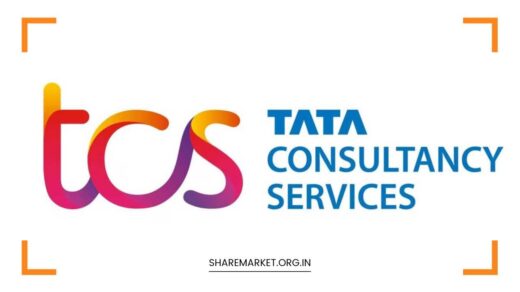Post Office Investments: Get More Interest Than Bank FD

Post Office Investments
Post Office Investments: Get More Interest Than Bank FD
In India, the post office has long been a cornerstone of financial security, offering a variety of savings and investment schemes that cater to different needs and risk appetites.
Traditionally, bank fixed deposits (FDs) have been the preferred choice for those seeking a safe investment avenue with guaranteed returns.
However, recent years have seen a rising interest in post office schemes, primarily due to their competitive interest rates and a range of benefits that might outshine the traditional bank FD.
This article provides an in-depth analysis of various post office investment options, compares them with bank FDs, and highlights the potential advantages of choosing post office schemes. We aim to help you understand how these options might better suit your financial goals and investment strategy.
Understanding Post Office Schemes
India Post offers an array of investment schemes designed to meet the diverse needs of investors. Let’s explore some of the most popular post office investment options:
1. Public Provident Fund (PPF)
Nature: The Public Provident Fund (PPF) is a long-term savings scheme that combines investment with tax benefits. It is designed to encourage savings among individuals while providing a safe and attractive return on investment.
Maturity: The standard maturity period for a PPF account is 15 years. After the initial 15 years, the account can be extended in blocks of 5 years, providing continued benefits and flexibility.
Interest Rate: The interest rate on PPF is determined quarterly by the government. It is generally higher than many other traditional savings options, including bank FDs.
Benefits: The PPF offers several benefits:
- Tax Deductions: Contributions to the PPF are eligible for tax deductions under Section 80C of the Income Tax Act.
- Tax-Free Maturity Amount: The interest earned and the maturity amount are completely tax-free, making it an attractive option for long-term tax planning.
- Loan Facility: PPF account holders can avail themselves of a loan against their PPF balance, offering financial flexibility in times of need.
2. Sukanya Samriddhi Yojana (SSY)
Nature: Sukanya Samriddhi Yojana (SSY) is a specialized long-term savings scheme aimed at securing the future of a girl child, focusing on her education and marriage expenses.
Maturity: The scheme matures 21 years from the date of account opening or when the girl turns 21, whichever comes earlier.
Interest Rate: The interest rate for SSY is set quarterly by the government and is typically higher compared to many other post office schemes and bank FDs.
Benefits: SSY provides the following advantages:
- Tax Deductions: Contributions qualify for tax deductions under Section 80C of the Income Tax Act.
- Higher Interest Rates: SSY generally offers higher interest rates compared to other government savings schemes, making it a lucrative option for securing the future of a girl child.
3. Senior Citizens Savings Scheme (SCSS)
Nature: The Senior Citizens Savings Scheme (SCSS) is designed specifically for individuals aged 60 and above, offering a reliable investment avenue with attractive returns.
Maturity: The scheme has a maturity period of 5 years, which can be extended by an additional 3 years.
Interest Rate: Interest rates for SCSS are reviewed quarterly by the government and are generally higher than those offered by most other post office schemes.
Benefits: The SCSS comes with several benefits:
- Higher Interest Rates: It provides higher interest rates compared to other investment options for senior citizens.
- Tax Benefits: Contributions to SCSS qualify for tax deductions under Section 80C, enhancing its appeal for retirees seeking to optimize their tax savings.
4. National Savings Certificate (NSC)
Nature: The National Savings Certificate (NSC) is a time-bound savings instrument with guaranteed returns, making it a popular choice for risk-averse investors.
Maturity: NSC has a fixed maturity period of 5 years.
Interest Rate: The interest rate on NSC is fixed at the time of investment and compounded annually.
Benefits: NSC offers:
- Tax Deductions: Investments in NSC are eligible for tax deductions under Section 80C.
- Interest Compounding: The interest on NSC is compounded annually, which can lead to significant returns over the investment period.
5. Monthly Income Scheme (MIS)
Nature: The Monthly Income Scheme (MIS) is designed to provide regular income through monthly interest payouts, making it ideal for individuals seeking a steady income stream.
Maturity: The MIS has a maturity period of 5 years.
Interest Rate: The interest rate for MIS is determined quarterly by the government and is usually higher compared to many other traditional savings options.
Benefits: The MIS provides:
- Regular Income: Monthly interest payouts provide a consistent income, which can be beneficial for retirees or individuals with regular income needs.
- Reinvestment Option: Investors can reinvest the maturity amount to continue earning returns.
Post Office vs. Bank FD: A Comparative Analysis
When choosing between post office schemes and bank fixed deposits, several factors come into play. Here’s a comparative analysis to help you make an informed decision:
Interest Rates
Post Office Schemes: Generally offer higher interest rates compared to bank FDs. For instance, schemes like PPF and SSY often provide returns that exceed those of standard bank fixed deposits.
Bank FDs: While competitive, bank FD rates can vary significantly based on the term, amount, and prevailing economic conditions. Often, the rates are lower compared to post office schemes, particularly for longer durations.
Tax Benefits
Post Office Schemes: Several post office schemes, such as PPF and SSY, offer tax deductions under Section 80C of the Income Tax Act. Additionally, the interest earned and the maturity amount for these schemes are often tax-free.
Bank FDs: The tax benefits for bank FDs are limited. While the interest earned is taxable, certain tax-saving FDs with a lock-in period of 5 years offer tax deductions under Section 80C. However, the interest earned on these FDs is subject to tax.
Liquidity
Post Office Schemes: Typically, post office schemes have lower liquidity compared to bank FDs. Some schemes, like PPF and SSY, have long lock-in periods with penalties for early withdrawal.
Bank FDs: Bank FDs generally offer higher liquidity. Premature withdrawals are permitted, though they often come with penalties and reduced interest rates.
Safety
Post Office Schemes: Backed by the government, post office schemes are considered extremely safe, with a minimal risk of default.
Bank FDs: While bank FDs are also relatively safe, they are backed by individual banks, which introduces a degree of risk depending on the financial health of the bank. The Deposit Insurance and Credit Guarantee Corporation (DICGC) insures deposits up to a certain limit, adding a layer of security.
Minimum Investment
Post Office Schemes: Often require a lower minimum investment, making them accessible to a broader range of investors. For instance, PPF has a low minimum contribution requirement.
Bank FDs: Generally require a higher minimum deposit amount compared to post office schemes. The minimum amount can vary between banks and is often higher for fixed deposits with attractive interest rates.
Advantages of Post Office Investments
Higher Interest Rates
Post office schemes typically offer higher interest rates compared to bank FDs, providing better returns on investment. This makes them an attractive option for investors seeking to maximize their returns.
Tax Benefits
Many post office schemes come with substantial tax benefits, including deductions under Section 80C and tax-free interest and maturity amounts. This can significantly enhance your overall returns by reducing your tax liability.
Government Backing
Post office investments are backed by the government, making them a highly secure option. The government’s backing ensures that your investment is safe from market fluctuations and default risks.
Flexibility
The variety of schemes offered by the post office caters to different financial goals and risk profiles. Whether you are looking for long-term growth, regular income, or tax benefits, there is likely a post office scheme that meets your needs.
Accessibility
With a vast network of post offices across India, it is convenient to open and manage post office accounts. This widespread presence makes it easier for investors to access and handle their investments.
Factors to Consider Before Investing
Investment Horizon
Your investment horizon plays a crucial role in determining the right scheme for you. If you are planning for long-term goals, schemes like PPF and SSY might be suitable. For short-term needs, options like the Monthly Income Scheme or National Savings Certificate could be more appropriate.
Risk Tolerance
Assessing your risk tolerance is essential when choosing between post office schemes and bank FDs. Post office schemes generally offer safer, government-backed returns, but if you have a higher risk appetite, you might explore other investment avenues as well.
Financial Goals
Clearly defining your financial goals helps in selecting the right investment scheme. Whether you are saving for retirement, a child’s education, or building an emergency fund, understanding your goals will guide you in choosing the most suitable option.
Tax Implications
Understanding the tax benefits and implications of different schemes is vital for optimizing your returns. Schemes with tax benefits under Section 80C can offer significant savings, but it’s important to consider how the tax treatment affects your overall investment strategy.
Liquidity Needs
Evaluate your liquidity needs before investing. If you require easy access to funds, consider schemes with higher liquidity. Conversely, if you are investing for long-term goals and can lock in your funds, post office schemes with longer lock-in periods might be advantageous.
Final Remarks
Post office investments present a compelling alternative to traditional bank FDs, offering a combination of higher returns, attractive tax benefits, and government backing. By thoroughly assessing your financial goals, risk tolerance, and investment horizon, you can select the most suitable post office scheme to effectively grow your wealth.
It is crucial to stay informed about interest rate changes and modifications to schemes announced by the government. Regularly reviewing your investment portfolio will help ensure it aligns with your evolving financial needs and goals.
Before making any investment decisions, it is advisable to consult with a financial advisor to tailor an investment strategy that best suits your personal financial situation.
Disclaimer: The information provided in this article is for general knowledge and informational purposes only and does not constitute financial advice. It is recommended to consult with a financial advisor before making any investment decisions.

















